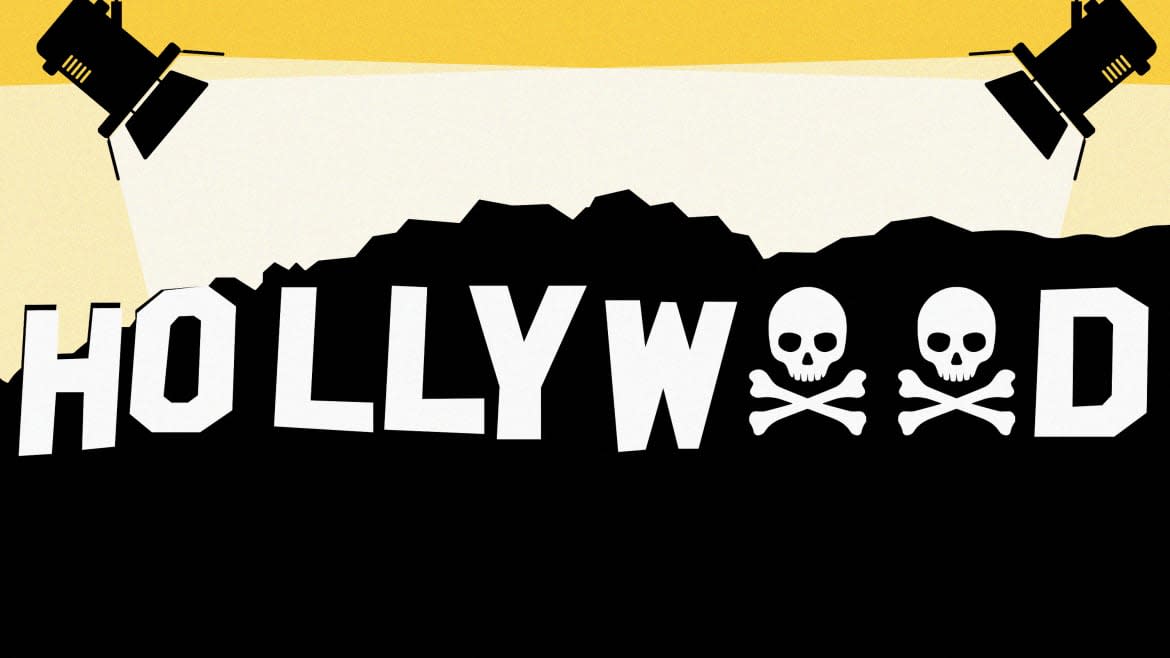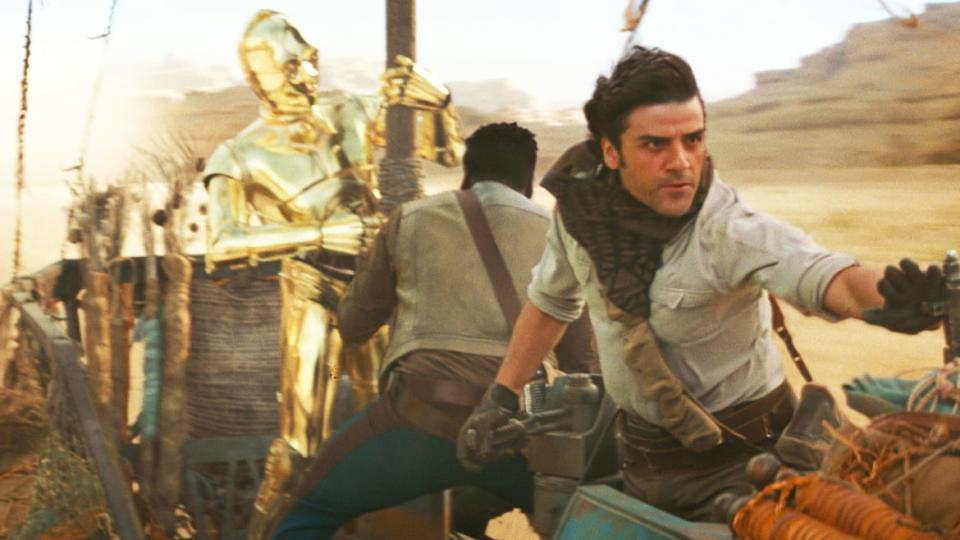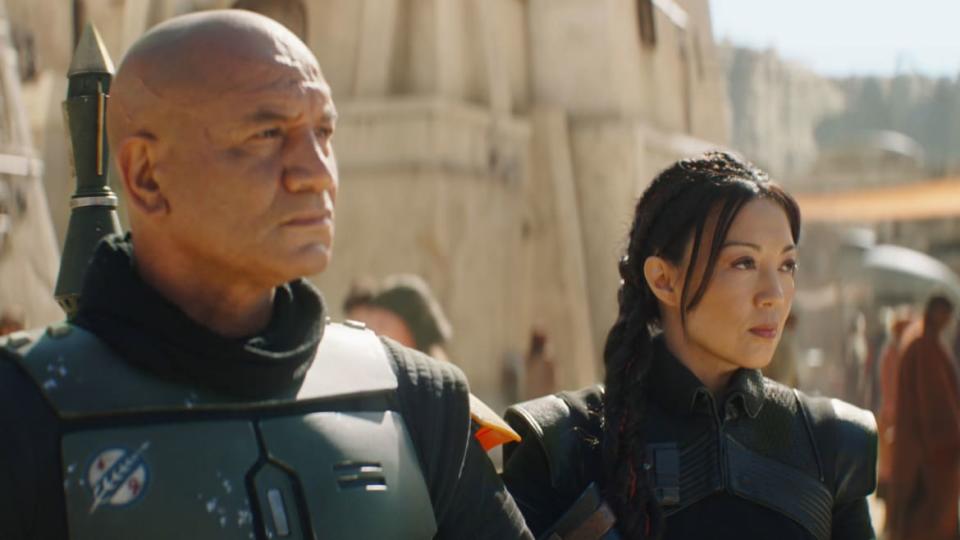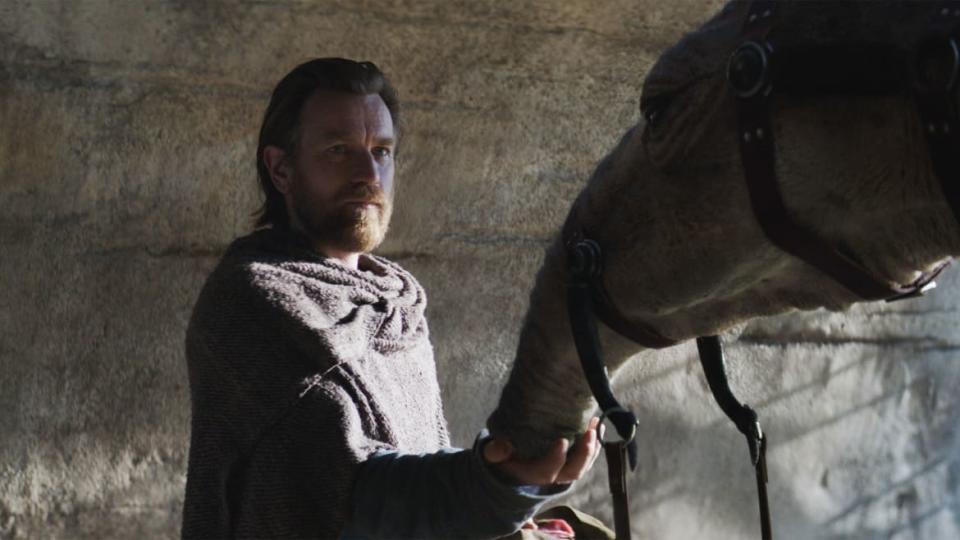No One Dies In Movies and Shows Anymore (and That’s Not Good)

[Spoiler art: This column contains plot spoilers of the show Disney+ shows, Obi-Wan Kenobi and The Book of Boba Fett, plus some other movies and shows you probably should have seen by now.]
When you’re 8 years old, playing with your action figures, you reside in a blissful medium of power fantasy and hyped-up drama, where the good guys are always smashing and killing the bad guys. Then your mom calls you to dinner, you come back later, and everything is reset, everyone’s alive again, and you get to wreck Skeletor and vanquish Darth Vader all over again.
In modern Hollywood, the same endlessly resetting dynamic pervades screenwriting—the indulgent reverie of childhood play, where the child gets to fashion their own fantasies, experience the melodrama of characters dying, and then resurrect them without much explanation, because the rapidly unfolding moment is more important than logic or continuity. In the child’s mind, the stakes only apply to the present exhilarating confrontation or chase.
Jordan Peterson’s Downfall Is How Boring He’s Become
Add to this the existential meaninglessness of multiverses, where characters have endless iterations, factor in the audience’s love for existing legacy characters, and modern screenwriters’ patchiness in developing appealing new ones, and you get the cavalier indifference to actual sacrifice and loss in contemporary content.
You remember how the evil Sith Lord Palpatine absolutely, definitely died in 1983’s Return of the Jedi, where he wailed his way down to an oblivion of bodily destruction, evaporating into a blue gaseous nothingness?
Well, J. J. Abrams got thrown the hot potato of 2019’s The Rise of Skywalker after Rian Johnson dragged the franchise askew with 2017’s The Last Jedi, and with limited options, Abrams opted to resurrect Palpatine because he was, well, a recognizable character.

Oscar Isaac in Star Wars: The Rise of Skywalker
In the Star Wars Disney+ TV series, Obi-Wan Kenobi, the evil Grand Inquisitor was stabbed with a lightsaber by the rival character, Reva. The wound penetrated clear through him, cauterizing his insides and probably at least two-thirds of his spinal column. He was dead.
Well, an episode later he was back, and in remarkable shape. There is one nice twist here, though: he impales the character of Reva in return.
Given the fact Reva just had her intestines turned to sausage, and given the audience has literally just seen one presumed dead character reappear under the exact same circumstances, and it would be laughably insulting to the viewer if we were to go through the exact same un-shocking reveal that the character somehow survived. This would be even more ridiculous given the Inquisitor’s experience, which would likely make him motivated to make sure his own effort would succeed. There should be absolutely no prospect whatsoever of Reva surviving this.
Well, even grievous bodily harm and a cauterized lightsaber stab wound that means she can look through herself isn’t enough to stop Reva.
At least J. J. Abrams had the integrity to not mess around with the rebooted Star Trek movies. He skilfully brought one of those films to a pitch of emotional drama, wrought with pain and enduring consequences, with Captain Kirk dying—all cardiovascular activity ceasing, all brain function electrical impulses being suspended, and there being no way in which any reanimation could be plausible in the accepted boundaries of this franchise.
Well, in the very next scene, Kirk is revived with what Dr. McCoy informs him is a kind of super blood, and within a few minutes there’s a resumption of running down spaceship corridors and lots of CGI explosions.
Wanda definitely died in the Marvel Cinematic Universe (MCU) film, Doctor Strange in the Multiverse of Madness, right? The Scarlet Witch sacrificed herself when she destroyed Wundagore Castle, and indisputably died in the rubble, right? Not so fast! A hidden detail in the sequel’s ending may hint that Wanda is still alive. (When Wanda destroyed the Castle, a red flash of light could be seen, raising the possibility she have teleported.) Elizabeth Olsen, who played Wanda, even teased that “there’s a couple different versions of what could happen.”
So, life, death; what are the distinctions between them, really, if you think about it?
Remember when Boba Fett, uber-cool ancillary character of the original trilogy 100 percent tumbled away to be consumed over 1,000 years within the depths of the Sarlacc?

(L-R): Temura Morrison is Boba Fett and Ming-Na Wen is Fennec Shand
Well, Boba’s back in the Disney+ show, The Book of Boba Fett! He just, you know, climbed out or whatever. You paid your Disney+ subscription already. Who cares?
‘I Am Groot’ Is a Delightful Marvel Superhero Kids Snack
The death of Groot at the battle of Xandar was a heartbreaking moment for fans of the first Guardians of the Galaxy movie. The much-loved tree-creature sacrificed his life for his team, signing off with the poignant, “We are Groot.” However, a twig from his destroyed body was planted by Rocket to birth a new Groot, so no one, or nothing, really dies, not even a Flora Colossi from planet X.

Obi-Wan Kenobi (Ewan McGregor) with an eopie
After the death of Qui-gon in the Star Wars prequel, The Phantom Menace, there was an eruption of on-screen drama, with the young Obi-Wan Kenobi hell bent on avenging his fallen mentor. This culminated with the iron-clad, one and done, air-tight, clear as day, universally acknowledged, never contested, patently obvious death of Darth Maul, who tumbled away to his demise, followed half a second later by the other half of his severed body.
Well, where there’s a will there’s a way.
In Solo: A Star Wars Story (which is set after the events in The Phantom Menace) Darth Maul is seen, in one piece, in an otherwise pointless scene involving an intergalactic phone call.
There’s even movie deaths that aren’t deaths, but would be more emotionally affecting if they were.
In The Rise of Skywalker, the beloved legacy character Chewbacca appears to die on a carrier ship that exploded in part because of his ally Rey’s excessive use of her “force” powers. This would be a bold choice by the filmmakers. It’s a heartrending moment, one of the few legitimately emotional beats in the film.
But then Chewbacca reappears, unscathed, a scene later, and the movie bumbles along to a conclusion featuring the main characters galloping over the superstructure of a star destroyer on space horses.
There have been famous resurrections in the past, of course: Ripley in the last Alien movie. Spock in the third installment of the 1980s Star Trek franchise. But the latter was developed through a mixture of Vulcan lore, setup, continuity from the previous film, and a viable character arc. This is somewhat different from bringing back a dead villain in Rise of Skywalker and justifying it with the actual line: “Somehow, Palpatine returned…”
All this resetting undermines the dramatic stakes that make storytelling compelling, like the death of Boromir in Lord of the Rings. Or the death of Dumbledore in Harry Potter.
The Age of the Strongman Is Back—but Is It Here to Stay?
These moments sharpen the stakes, are pivotal plot markers, and make us care more about the characters.
One example of “real” death in recent fantasy fiction came from the so-called “Red Wedding” episode of Game of Thrones in 2013. It became a seminal moment in popular culture, because millions of viewers found themselves contending with a new dynamic—ostensible hero's journey characters could be slaughtered, or maimed, without warning, and the show would continue to go on. And these dramatic moments weren’t gimmicks, they were, in fact, in service of the plot, the hard-edged aesthetic of the show, and its source material.
Contemporary entertainment, with the ambiguities of multiverses, and teased loopholes, might have seemed savvy to the studios, who could retain and make the most of characters in dependable IPs. But this summer’s procession of bombs and flops, the growing sense of “superhero fatigue,” and the ever-growing reliance on existing properties, and remakes implies that more traditional storytelling, with consequences, stakes, and an unequivocal death or two, might get cinemagoers a bit more enthusiastic.
We need to care about characters, so bring back the death in our movies and shows!
Get the Daily Beast's biggest scoops and scandals delivered right to your inbox. Sign up now.
Stay informed and gain unlimited access to the Daily Beast's unmatched reporting. Subscribe now.

